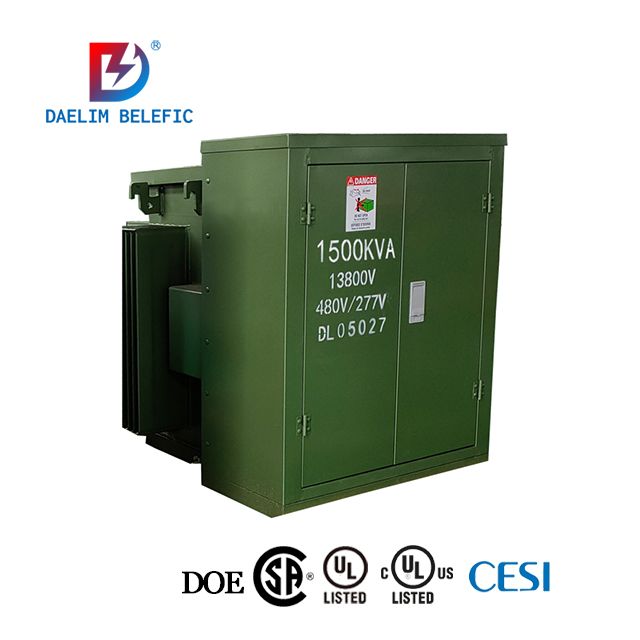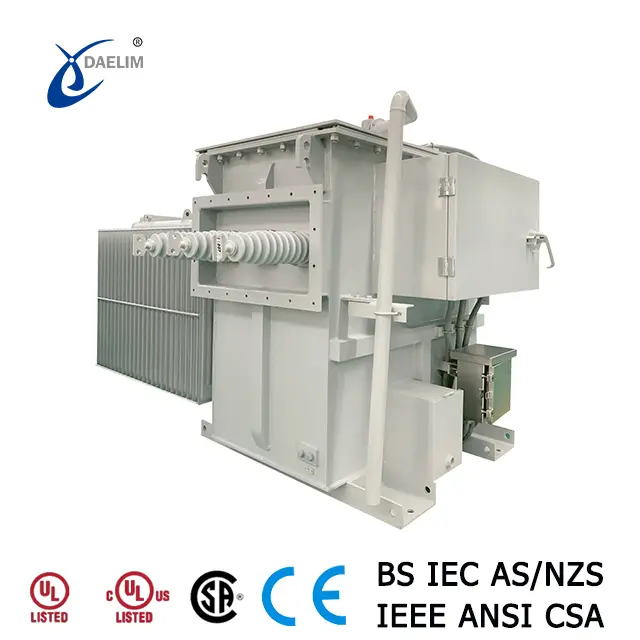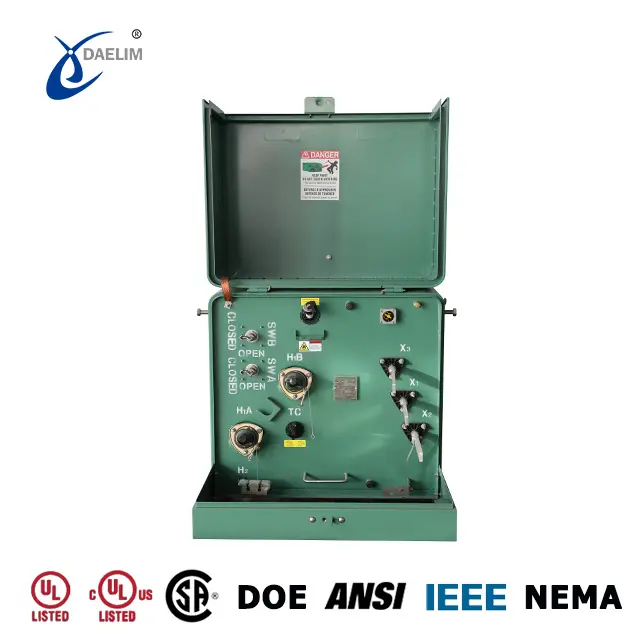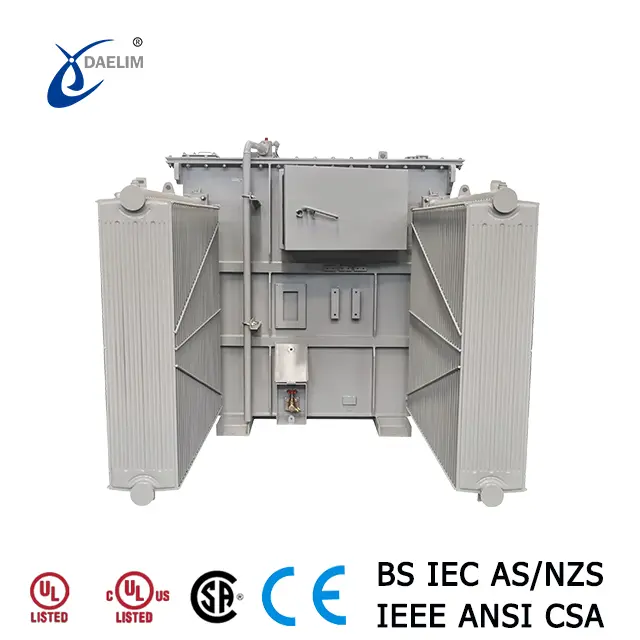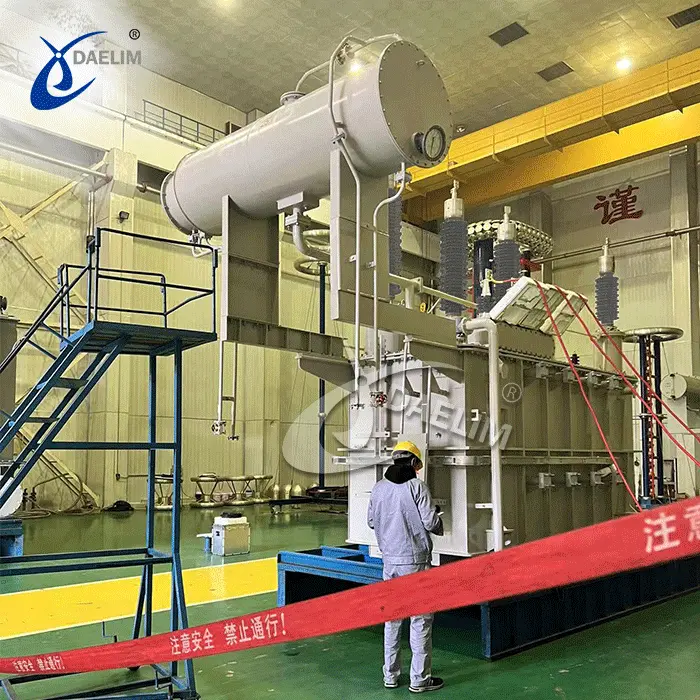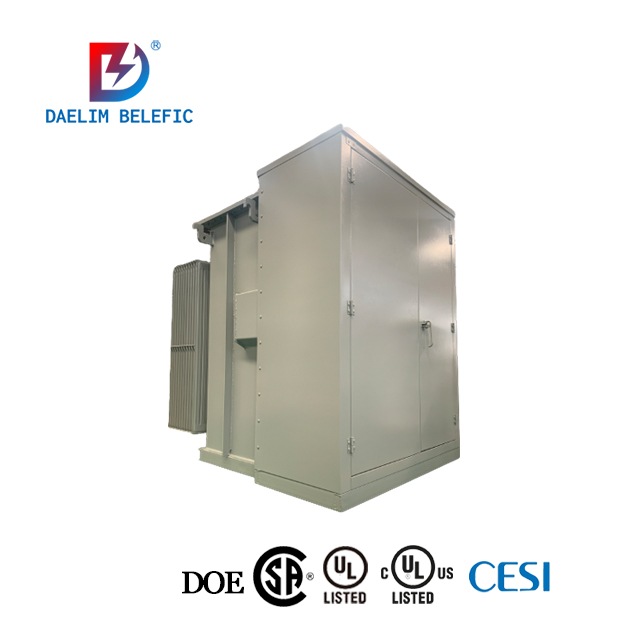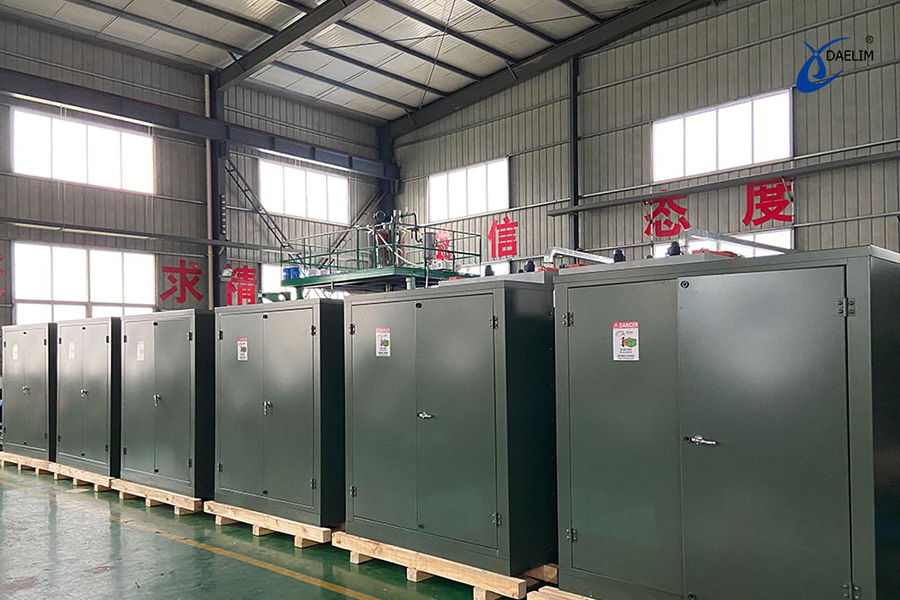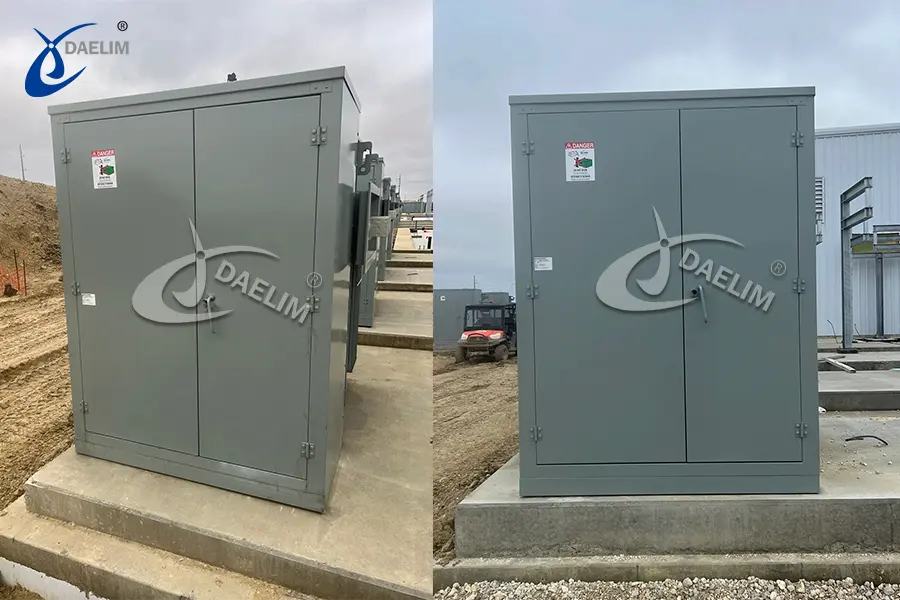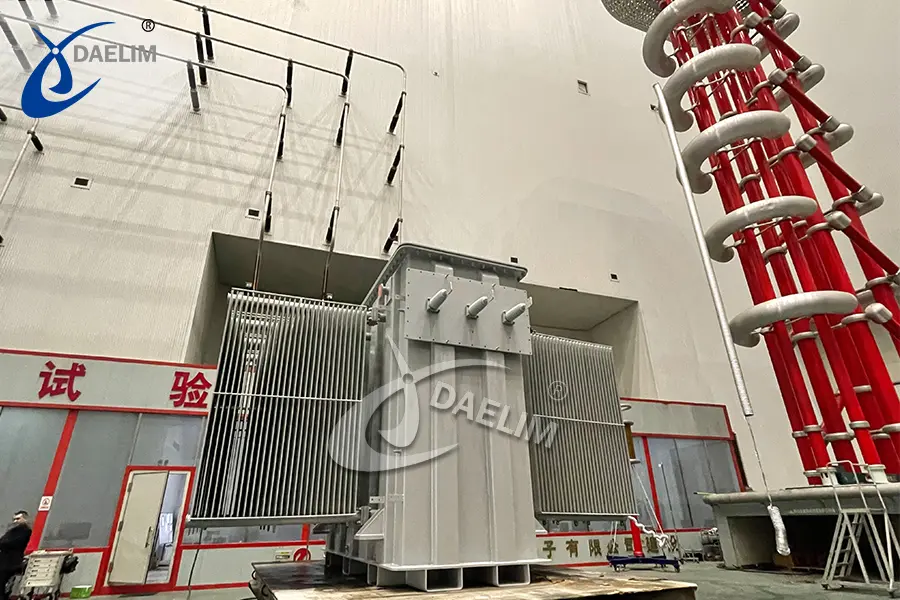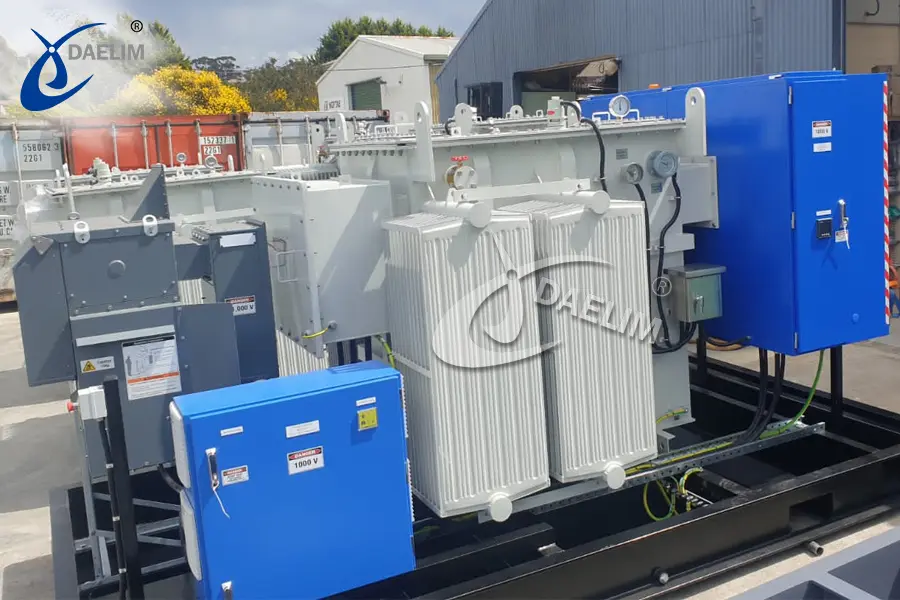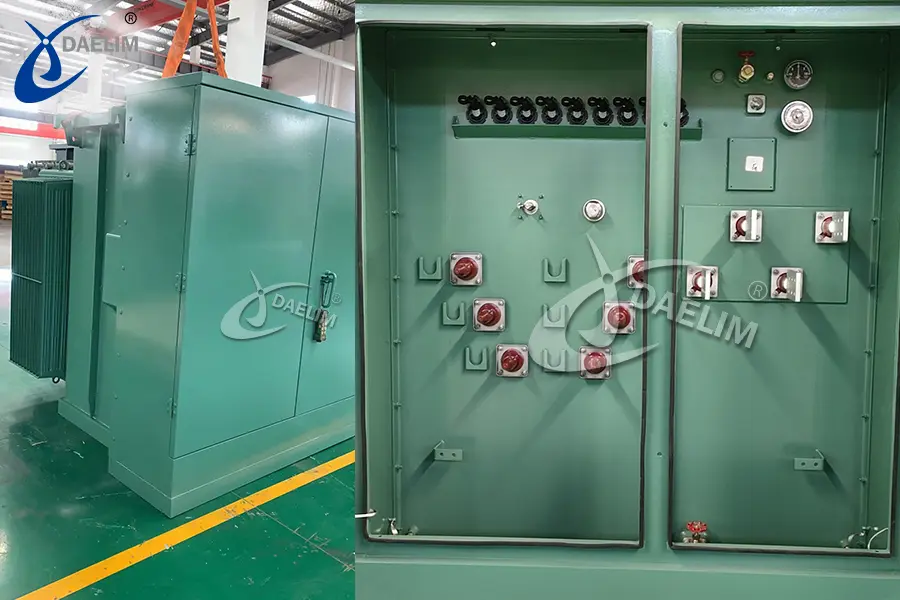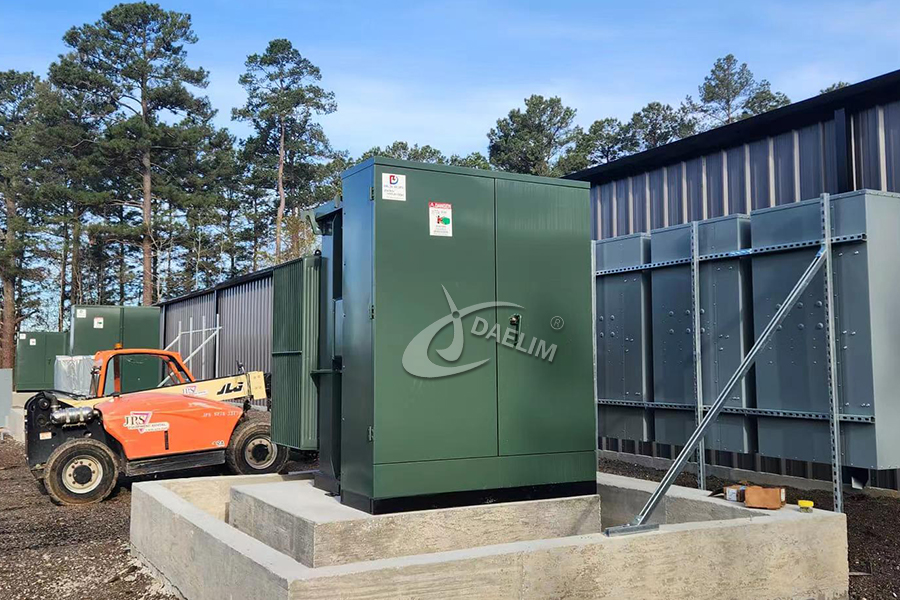The primary guide of delta star transformer
Do you know anything about Star Delta transformers? This article will introduce the definition of delta star transformer, its advantages and disadvantages, application, calculation formula, and the reason for using this connection.
Daelim Transformer is a professional transformer supplier. The professional technical team can design electrical transformer that fully complies with ANSI/EEE, DOE, CSA, AS/NZ, and other international standards. It has SGS, CESI, IEEEC 57, IEC60076, CSA C88, and other transformer test reports, as well as UL, and cUL certificates.
The difference between star connection and delta connection
The common transformer winding has two kinds of connection, namely "delta connection" and "star connection".
The difference between star connection method and triangle connection method of transformer: whether there is neutral point, third harmonic and zero sequence current in the fluidity of triangle, different current voltage, different applicability.
1. There is no neutral point:
Star connection (Y) connection can be derived from the neutral point; The triangle (D) connection cannot lead to a neutral point.
2. Third harmonic and zero sequence current flow in triangle:
Star connection (Y) connection third harmonic and zero sequence current can not flow in the internal; Triangle (D) connects the third harmonic wave and the zero-sequence current can flow in the triangle, and has no influence on other coils.
3.Current and voltage
Star connection (Y) connection method: line current and phase current equal; The line voltage is square root of 3 of the phase voltage; There are two kinds of voltage values, there are zero lines, such as 380V and 220V two kinds of voltage.
Triangle (D) connection: line voltage is equal to phase voltage; The line current is square root of 3 of the phase current; There is only one voltage, no zero line.
4. Applicability:
Star (Y) connection: generally used for distribution network output, easy for users to select voltage.
Triangle (D) connection: generally used for power network transmission.
Learn more : Basic Guide Of Delta Transformer
Why do we use delta-star in transformer?
The delta connection on the low-voltage side of the main transformer serves to eliminate third harmonics, preventing them from distorting the power grid voltage waveform. A notable characteristic of third harmonics is their phase alignment, which allows them to circulate effectively within the delta configuration, thereby attenuating their transmission to the system and ensuring quality power supply. Additionally, zero-sequence currents can circulate in the delta connection when the neutral point is directly grounded on the high-voltage side of the main transformer, preventing potential malfunctions in low-voltage side zero-sequence protection affecting the superior power grid.
On the other hand, the star connection on the high-voltage side of the main transformer aims to reduce line losses and current, improve neutral point grounding, and minimize non-ferrous metal requirements. The low-voltage side is delta-connected primarily for its ability to attenuate third harmonics.
In transformers, one side of either the primary or secondary windings is typically delta-connected to provide a path for third harmonic currents, ensuring induced potentials remain sinusoidal and avoiding distortion. This delta-connected winding serves a similar purpose whether on the primary or secondary side.
However, for insulation material efficiency, the high-voltage side is commonly star-connected, while the low-voltage side is delta-connected.
-
The high-voltage side operates at a constant line voltage where phase voltage is only 1/√3 of the line voltage, allowing for thinner insulation design, reduced material usage, and smaller core dimensions. This configuration is crucial for high-current grounding systems. Star connection on the high-voltage side mitigates phase potential waveform distortion and potential insulation breakdowns, while reducing costs.
-
Delta connection on the low-voltage side decreases phase currents, minimizing winding cross-sectional areas and overall costs, while protecting against third harmonics.
-
In excitation transformers, the high-voltage side is typically star-connected and the low-voltage side delta-connected. This setup optimizes for generator output voltage where the high-side winding operates at line voltage divided by √3, aligning with phase voltage requirements. Conversely, delta connection on the low-voltage side reduces winding costs and effectively forms a third harmonic loop for generator protection.
By understanding these configurations, transformers can be optimized for efficient operation, reduced costs, and enhanced system reliability.
Try for free: Pad Mounted Transformer
Where are delta-star transformers used?

Delta-star starting can only be used for starting the occasion of small load, because the torque when the motor is connected to the star connection is only half of the triangle connection, if the starting load is heavy, the motor may not be started, resulting in burning. Can be used in such as: water pumps, fans, air compressors, and other starting equipment can be empty load operation. For example, the ball mill and other equipment with heavy starting load cannot be used.
Get it now:Basic Guide to kVA Transformer
Delta star transformer application
Now generally, the high pressure side above 35KV system is star-shaped connection, the low pressure side is triangular connection, the high pressure side below 10KV system is triangular connection, and the low pressure side is star-shaped connection. Transformers with high and low voltage sides are also star-connected.
Delta-star connection advantages and disadvantages
1). Advantages of Y connection:
The most economical for high voltage winding;
Can there be a midpoint to use;
Allow direct grounding or grounding through impedance;
Allow to reduce the insulation level of the midpoint (i.e. graded insulation);
A tap joint can be provided at the midpoint of each phase, and the tap switch can also be located at the midpoint; Single-phase load is allowed, and the midpoint can carry current.
Disadvantages of D connection: reduced motor power.
2).Advantages of D connection:
Most economical for high current low voltage winding;
Zero sequence impedance can be reduced when used with Y connection winding.
Disadvantages of D connection: High insulation requirements.
Read more: 750 kVA Pad Mounted Transformer
Delta star transformer advantages
1.A transformer, the same wind can be installed in Y type winding, the wind can also be installed in the delta type winding;
2. The same transformer, the installation of winding delta type, wire section is small, series turns, high voltage phase, phase current is low;
3.The same transformer, the installation of Y winding, wire section is large, the number of turns in series is small, the working phase voltage low, high phase current;
4.Delta type winding requires three-phase symmetry, power symmetry is also high, so that there will be no circulation, otherwise it will heat up, increase the loss; 5, Y winding in the three-phase symmetry is not good, power symmetry is not high, there will be no circulation, but there will be zero drift, three-phase work serious asymmetry;
5.In use, the type winding can be started by Y-delta start mode, and the type Y winding can not be started by Y-delta start mode;
6. because the resistance heat loss is proportional to the square of the current, so the same transformer, the installation of winding delta type heat loss is small.
Keep reading: Construction of three phase transformer
When does delta star transformer work satisfactorily
A star-delta connection is a specific method used to start a three-phase AC transformer, particularly effective in mitigating the high starting currents that can reach 5 to 7 times the rated current, especially in high-power or overloaded equipment. This method aims to reduce the transformer's startup current, thereby protecting the transformer itself and minimizing impact on the power supply system and other connected electrical equipment.
In a star-delta starting arrangement, the transformer's three windings are initially connected in a star configuration during startup. Once the startup phase completes and the equipment transitions to normal operation, the connection switches to a delta configuration. This transition effectively lowers the starting current, ensuring both the transformer's longevity and the stability of the entire electrical system.
This method proves advantageous in scenarios with substantial starting currents or limited power supply system capacity, making it a widely adopted practice in industrial applications.
Read on: The Ultimate Guide to Dead Front Transformers
Delta star transformer calculations
Determination of starting time of star triangle
Calculation formula:
(Capacity squared ×2) +4 (seconds)
A, formula
Motor starting star triangle, starting time is easy to set;
Capacity square root times two, total plus four units per second.
Motor starting star triangle, overload protection thermal element;
Set current phase current, capacity times eight divided by seven.
Second, capacity calculation
When the generator capacity is 200KVA, calculate KW, 200×0.8 = 160KW 0.8 is the power factor (range 0.7-0.9, usually 0.8), namely COS φ = 0.8
(1) Calculate the motor capacity
Power KW÷ Power factor 0.8,
For example, 37KW÷0.8 = 46.25kVA
(2) Calculate the star triangle start conversion time
6.801×2+4 = 17.602≈17.6 secs 6.801×2+4 = 17.602≈17.6 secs
Keep on reading: Basic Guide To High Voltage Power Transformers
Delta star transformer manufacturer
Daelim is a manufacturer of star triangle transformers, if you want to know more information about star triangle connection mode and star triangle transformers, please consult Daelim manufacturers
Rread my article on:Basic introduction of electric furnace transformer
Why delta star transformers are used for lighting loads
When asymmetrical triangular load makes star connection, three-phase four-wire connection method must be adopted, and the middle line must be firmly connected to ensure that the voltage of each phase of the three-phase asymmetric load remains symmetrical and unchanged. If the middle line is disconnected, it will lead to the asymmetry of the three-phase load voltage, which causes the phase voltage of the light load is too high, so that the load suffers damage; One phase voltage in the load is too low, so that the load can not work normally, especially for three-phase lighting load, all adopt the star connection method unconditionally.
Rread my article on:A 150 kva transformer introduction
Related Products
Related Article
Pad Mounted Transformer Project Cases
3750kVA Primary 13.8kV, Secondary:0.415kV Loop-feed Pad-mounted Transformer, 12 sets for US market;
Overview of Oil-Immersed Distribution Transformers
This article mainly describes the oil-immersed distribution transformer, including the oil transformer application, characteristics, types, and other issues of the transformer.
5+FAQ About 15kV Transformer
How much do you know about 15kv transformers? This article will tell you the answers to 5 common questions. For example, what are the five types of 15kv transformers? What is the specification of a 15kv transformer?
Cast Resin Transformer: Definition, Types, Benefits, Applications, Maintenance
The cast resin transformer is a type of dry transformer that uses epoxy resin to encapsulate the windings and core, providing excellent insulation and environmental protection.
Ultimate 500 kVA Transformer For Guide
The 500kVA transformer plays the role of converting electrical energy in the power distribution system and is usually installed in the end-use area for residential lighting, industrial production, etc.
Basic Guide to Transformer Substation
The transformer substation is a facility where voltage is altered to facilitate the transmission of electric energy from a power plant to a distant location. The voltage must be elevated to a high level for transmission and subsequently lowered as necessary near the end-user. This process of voltage increase and decrease is accomplished by the substation.
13.8 kV 10.5 MVA Substation Transformer for Ecuador
A customer from Ecuador contacted Daelim Transformer for a 10.5MVA substation transformer (13.8kV high voltage, 2.4kV low voltage). Daelim Transformer provided a customized solution, conducted virtual factory tours, ensured rigorous quality control via video inspections, and offered post-delivery online training and ongoing support, fostering a successful partnership.
2600 kVA Pad Mounted Transformer for Blcokchain
Daelim Transformer successfully provided three customized 2600 kVA pad mounted transformers to power a state-of-the-art blockchain facility in Texas, USA. Our transformers were meticulously designed to meet the unique demands of the mining operation, ensuring seamless power distribution with unwavering reliability and efficiency.
20MVA Power Transformer for the United States
This project involves the development of a 20 MVA three-phase power transformer tailored for the United States market. The primary voltage is 24.94kV, and the secondary voltage is 4.16kV, indicating it functions as a step-down transformer. The design and production fully comply with IEEE C57.12.00 standards and have passed third-party UL team testing. All accessories also adhere to IEEE standards. FR3 vegetable oil serves as the insulating liquid for the transformers.
1500 kVA Transformer for Australian Mining Project
Introduce the 1500 kVA transformer tailored for Australian mining projects. The transformer operates in a three-phase configuration, with a total of four units deployed. Notably, its primary voltage stands at 11kV, while the secondary voltage is 1kV. Characterized by its compact size, emphasis on safety, and unwavering reliability, this transformer is meticulously designed and manufactured to meet the stringent requirements outlined in AS 60076 and AS efficiency value standards.Let's delve into the key features and specifications of this essential solution.
2 MVA Pad Mounted Transformer for Utility
Behold the backbone of Canada's utility infrastructure—the 2MVA pad mounted transformer. With a primary voltage of 4160Grdy/2400V and a secondary voltage of 800GrdY/461V, this transformer stands as a testament to efficiency and reliability in power distribution. Crafted in strict accordance with CSA standards and CAN/CSA802.1 energy efficiency guidelines, it embodies the pinnacle of engineering excellence.
2600 kVA Pad Mounted Transformer For Blockchain In Kansas
This morning, I received the on-site photos of the pad-mounted transformers from the customer, and I was overwhelmed with excitement and joy. These pad-mounted transformers are installed at a 20MW blockchain site in Kansas, USA. A total of 5 sets of 2600 kVA pad-mounted transformers, all UL-listed, are being deployed at this site. Currently, 3 sets have already been installed onsite and are scheduled to be powered on imminently.

